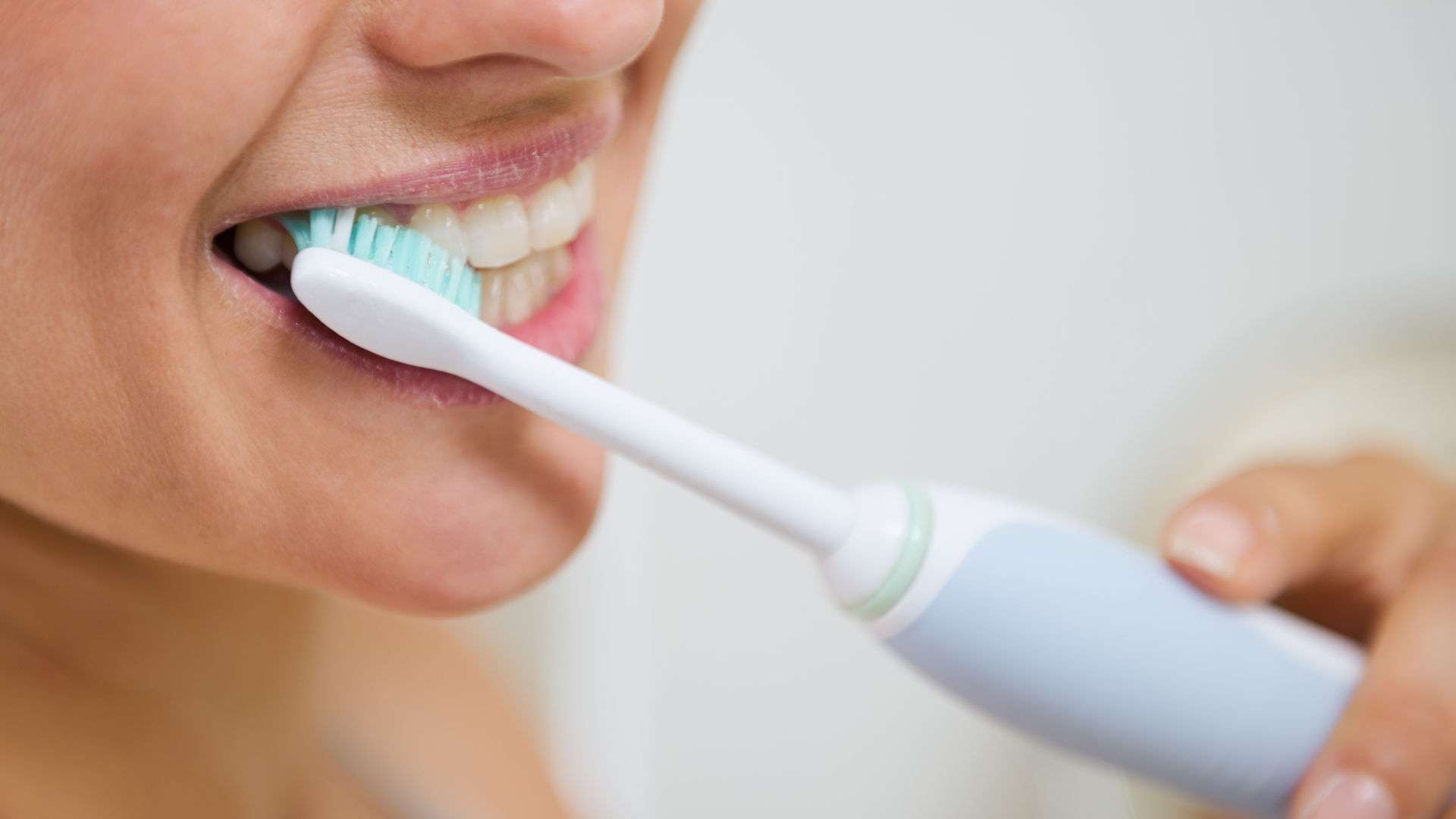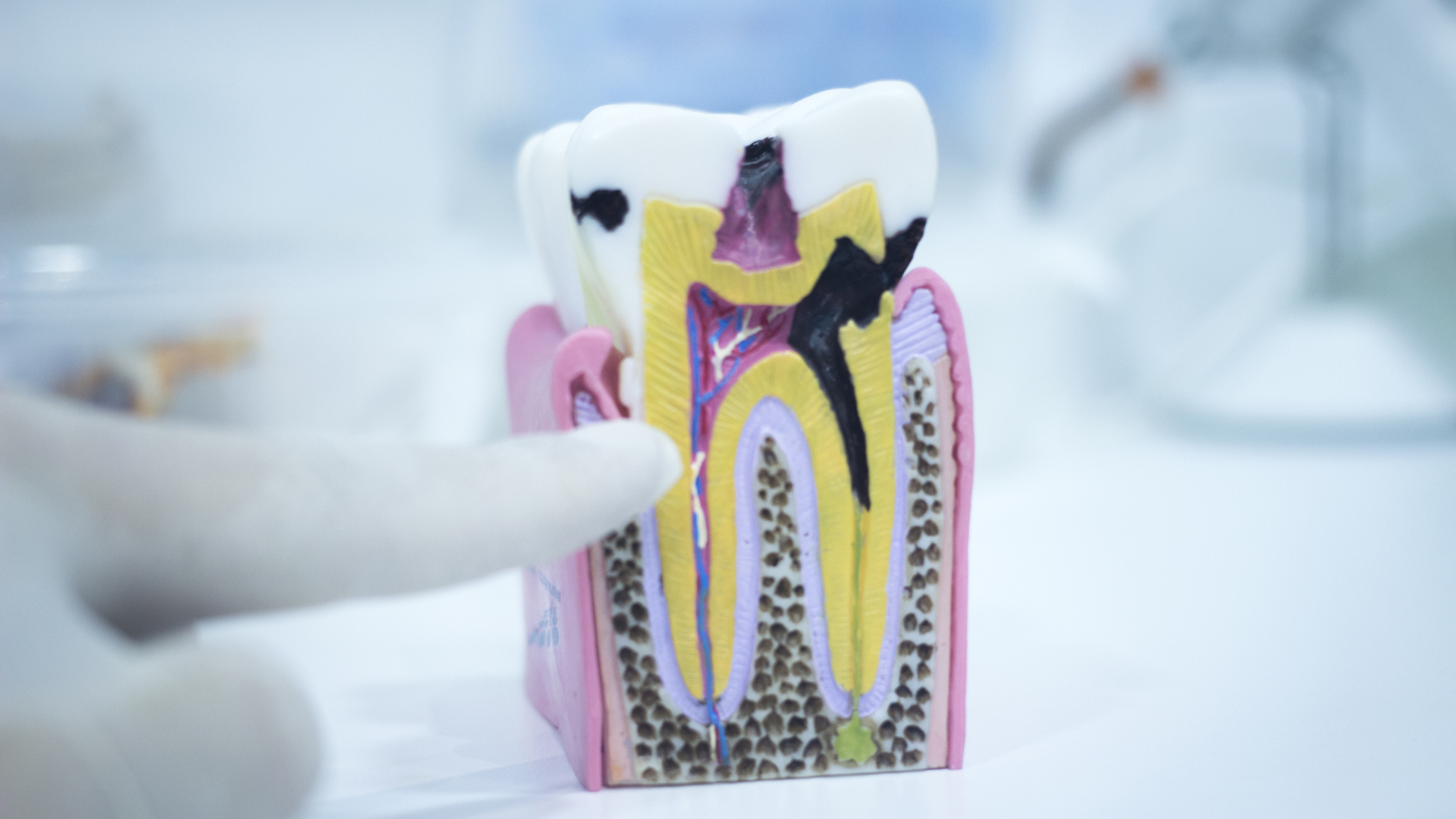Oral Health Topics

Dentistry Health Care That Works: Tobacco The American Dental Association has long been a leader in the battle against tobacco-related disease, working to educate the public about the dangers inherent in tobacco use and encouraging dentists to help their patients break the cycle of addiction. The Association has continually strengthened and updated its tobacco policies as new scientific information has become available. Frequently Asked Questions: Tobacco Products What effects can smoking have on my oral health? Are cigars a safe alternative to cigarettes? Are smokeless tobacco products safe? The American Dental Association has some alarming news that you should know. Smoking and Implants Recent studies have shown that there is a direct link between oral tissue and bones loss and smoking. Tooth loss and edentulism are more common in smokers than in non-smokers. In addition, people who smoke are more likely to develop severe periodontal disease. The formation of deep mucosal pockets with inflammation of the peri-implant mucosa around dental implants is called peri-implantitis. Smokers treated with dental implants have a greater risk of developing peri-implantitis. This condition can lead to increased resorption of peri-implant bone. If left untreated, peri-implantitis can lead to implant failure. In a recent international study, smokers showed a higher score in bleeding index with greater peri-implant pocket depth and radiographically discernible bone resorption around the implant, particularly in the maxilla. Many studies have shown that smoking can lead to higher rates of dental implant failure. In general, smoking cessation usually leads to improved periodontal health and a patient’s chance for successful implant acceptance.

Both natural teeth and teeth with restorations survive best in an oral environment that is clean and where the intake of harmful foods is controlled. Our program is designed to help prevent new cavities, preserve teeth that have been restored and manage periodontal disease. At the initial visit oral hygiene instructions are reviewed and are reinforced at subsequent recall visits. The following are helpful recommendations: Brush your teeth twice a day in a circular motion with a soft bristled toothbrush aimed at the gum. Floss every night in an up-and-down motion while keeping the floss in a U-shape and against the tooth surface. Avoid smoking. Avoid sticky sugary foods. Eat a balanced diet. Use antiseptic and fluoride rinses as directed. Have sealants placed on young permanent teeth.

Oral piercings (usually in the tongue or around the lips) have quickly become a popular trend in today’s society. With this popular trend, it is important to realize that sometimes even precautions taken during the installation of the piercing jewelry are not enough to stave off harmful, long-term consequences such as cracked or chipped teeth, swelling, problems with swallowing and taste, and scars. There is also a possibility of choking on a piece of dislodged jewelry, which makes it important to ask if the risks are warranted. One of the most serious long-term health problems that may occur from oral piercings come in the form of damage to the soft tissues such as the cheeks, gums and palate, as well as opportunistic infections. When performed in an unsterile environment, any kind of body piercing may also put you at risk of contracting deadly infectious diseases such as HIV and hepatitis. A tongue piercing is a common form of body piercing. However, tongue piercings have been known to cause blocked airways (from a swollen tongue). In some cases, a tongue piercing can cause uncontrolled bleeding.

Certain kinds of medications can have an adverse effect on your teeth. Long ago, children exposed to tetracycline developed tooth problems, including discoloration, later in life. The medication fell out of use, however, and is not an issue today. The best precaution is to ask your family physician if any medications he or she has prescribed can have a detrimental effect on your teeth or other oral structures. A condition called dry mouth is commonly associated with certain medications, including antihistamines, diuretics, decongestants and pain killers. People with medical conditions, such as an eating disorder or diabetes, are often plagued by dry mouth. Other causes are related to aging (including rheumatoid arthritis), and compromised immune systems. Garlic and tobacco use are other known culprits. Dry mouth occurs when saliva production drops. Saliva is one of your body's natural defenses against plaque because it acts to rinse your mouth of cavity-causing bacteria and other harmful materials. Some of the less alarming results of dry mouth include bad breath. But dry mouth can lead to more serious problems, including burning tongue syndrome, a painful condition caused by lack of moisture on the tongue. If dry mouth isn't readily apparent, you may experience other conditions that dry mouth can cause, including an overly sensitive tongue, chronic thirst or even difficulty in speaking. Heart Disease Poor dental hygiene can cause a host of problems outside your mouth—including your heart. Medical research has uncovered a definitive link between heart disease and certain kinds of oral infections such as periodontal disease. Some have even suggested that gum disease may be as dangerous as or more dangerous than other factors such as tobacco use. A condition called chronic periodontitis, or persistent gum disease, has been linked to cardiovascular problems by medical researchers. In short, infections and harmful bacteria in your mouth can spread through the bloodstream to your liver, which produces harmful proteins that can lead to systemic cardiac problems. That’s why it’s critical to practice good oral hygiene to keep infections at bay—this includes a daily regimen of brushing, flossing and rinsing. Antibiotic Prophylaxis In some cases, patients with compromised immune systems or who fear an infection from a dental procedure may take antibiotics before visiting the dentist. It is possible for bacteria from your mouth to enter your bloodstream during a dental procedure in which tissues are cut or bleeding occurs. A healthy immune system will normally fight such bacteria before they result in an infection. However, certain cardiovascular conditions in patients with weakened hearts could be at risk for an infection or heart muscle inflammation (bacterial endocarditis) resulting from a dental procedure. Patients with heart conditions (including weakened heart valves) are strongly advised to inform our office before undergoing any dental procedure. The proper antibiotic will prevent any unnecessary complications.

Naturally occurring latex has been linked in recent years to allergic reactions in people who use such products as latex gloves. The proteins in the latex, which can also become airborne, can cause problems in vulnerable people such as breathing problems and contact dermatitis. Some allergic reactions, including anaphylactic shock, have been more severe. Many health experts have rightly attributed the dramatic increase of allergic reactions to latex in the health care community to the increased use of gloves and other personal protection equipment in light of the AIDS epidemic. Latex is a pervasive substance in many household items—from toys and balloons to rubber bands and condoms. Latex allergies could cause the following symptoms: Dry skin Hives Low blood pressure Nausea Respiratory problems Tingling sensations People with high-risk factors for latex allergy include those who have undergone multiple surgical operations, have spina bifida, or are persistently exposed to latex products. If you are vulnerable to latex or have allergies related to it, please notify our office and, by all means, seek medical attention from your family physician.

Does mercury in the silver fillings in your mouth pose any long-term health risks? Does fluoride, in spite of everything we've been told since childhood, actually cause more harm than good? What does the latest research reveal about tobacco use on your overall oral health? This section is dedicated to the latest information about these and other oral health topics, pulled from authoritative sources such as the American Dental Association. Click here for the latest news from the American Dental Association.

The first line of defense against oral health problems In general dentistry, the dentist is the primary care provider for patients of all ages and is responsible for the prevention, diagnosis and treatment of a wide variety of conditions, disorders and diseases affecting the teeth, gums and maxillofacial (jaw and face) parts of the body. Even though general dentists primarily provide preventative care and minor restorative therapy, they are often able to perform a wide array of other dental procedures, including some minor cosmetic treatments. The American Dental Association (ADA) recommends that patients visit their general dentist at least once every six months to ensure proper oral health and functionality. Regular oral health check-ups and maintenance help to prevent the development of serious dental problems that may require more extensive and costly treatments. General dentists are highly educated and trained in multiple facets of dentistry, providing a variety of different services for you and your family including: Crowns and bridges Dentures Dental implants Gum disease (Periodontal) treatment Orthodontics Root canal therapy Teeth cleanings Bonding Dental fillings General dentists who do not perform a certain treatment will provide you with a specialist referral.

For decades, fluoride has been held in high regard by the dental community as an important mineral that strengthens tooth enamel, which thereby helps to prevent decay of tooth structures. Water fluoridation is endorsed by nearly every major health and safety-related organization in the world. Communities make it a common practice to "fluoridate" their drinking supplies in order for the general population to benefit from this inexpensive and effective preventative treatment. According to the American Dental Association, more than 144 million U.S. residents in more than 10,000 communities drink fluoridated water, most from public water supplies with sodium fluoride added artificially. Bottled Water, Home Water Treatment Systems, and Fluoride Exposure Can the consistent use of bottled water result in individuals missing the benefits of optimally fluoridated water? Can home water treatment systems (e.g., water filters) affect optimally fluoridated water supplies? The answer is yes to both. Read how you can avoid some of the pitfalls that may be preventing you from getting the maximum value of fluoride, in this article from the American Dental Association. ADA Statement on FDA Toothpaste Warning Labels The American Dental Association's Council on Scientific Affairs believes that one part of the warning now required on fluoride toothpastes by the Food and Drug Administration (FDA) could unnecessarily frighten parents and children, and that the label greatly overstates any demonstrated or potential danger posed by fluoride toothpastes. The label language, "If you accidentally swallow more than used for brushing, seek professional help or contact a poison control center immediately," is now required on all fluoride toothpastes. But the ADA, in a letter sent to the FDA last year, pointed out that a child could not absorb enough fluoride from toothpaste to cause a serious problem and that the excellent safety record on fluoride toothpaste argues against any unnecessary regulation. Enamel Fluorosis According to the American Academy of Pediatric Dentistry, a child may face a condition called enamel fluorosis if he or she receives too much fluoride during the years of tooth development. Too much fluoride can result in defects in tooth enamel. CDC Web Site Provides Information on Community Water Fluoridation People seeking information on whether their water system is fluoridated can now find out by visiting a new Web site at the Centers for Disease Control and Prevention (CDC). The new feature, "My Water's Fluoride," allows consumers in participating states to check out basic information about their water system, including the number of people served by the system and the target fluoridation level. Optimal levels recommended by the U.S. Public Health Service and CDC for drinking water range from 0.7 parts per million (ppm) for warmer climates, to 1.2 ppm for cooler climates accounting for the tendency to drink more water in warmer climates. States that are currently participating include Arizona, Colorado, Delaware, Florida, Georgia, Illinois, Indiana, Iowa, Maine, Massachusetts, Michigan, Minnesota, Nebraska, New Hampshire, Nevada, North Dakota, Oklahoma, Pennsylvania and Wisconsin.




